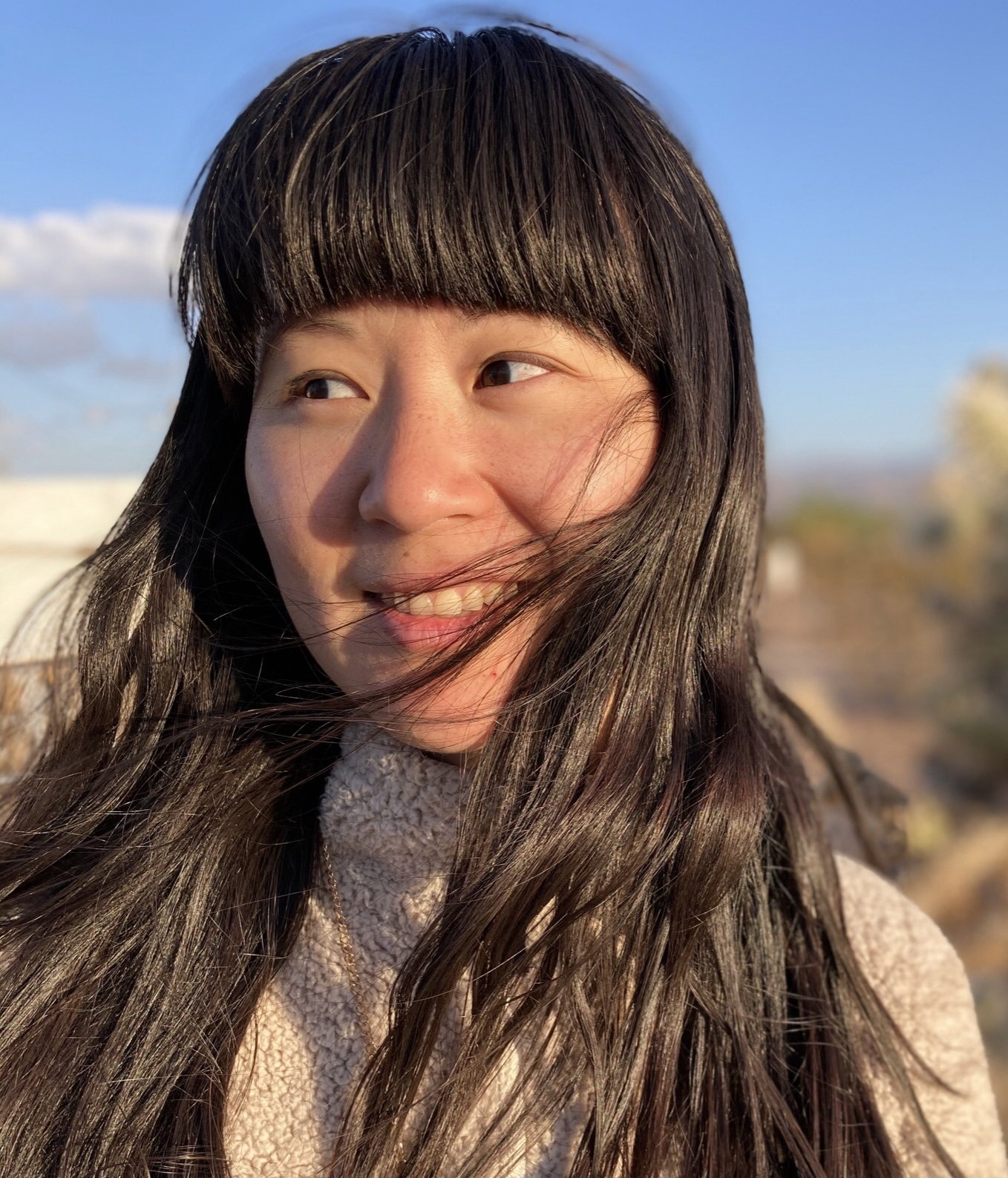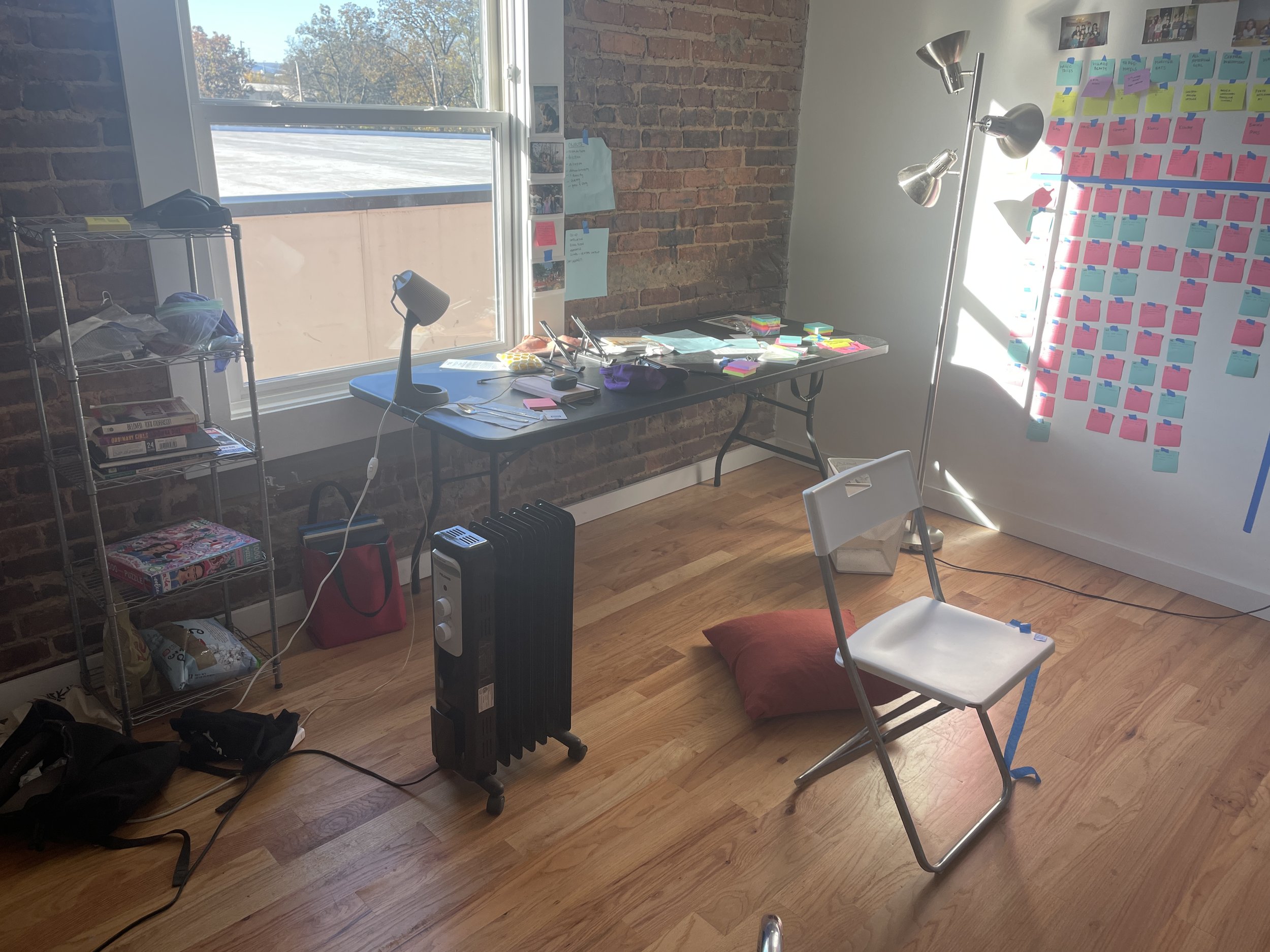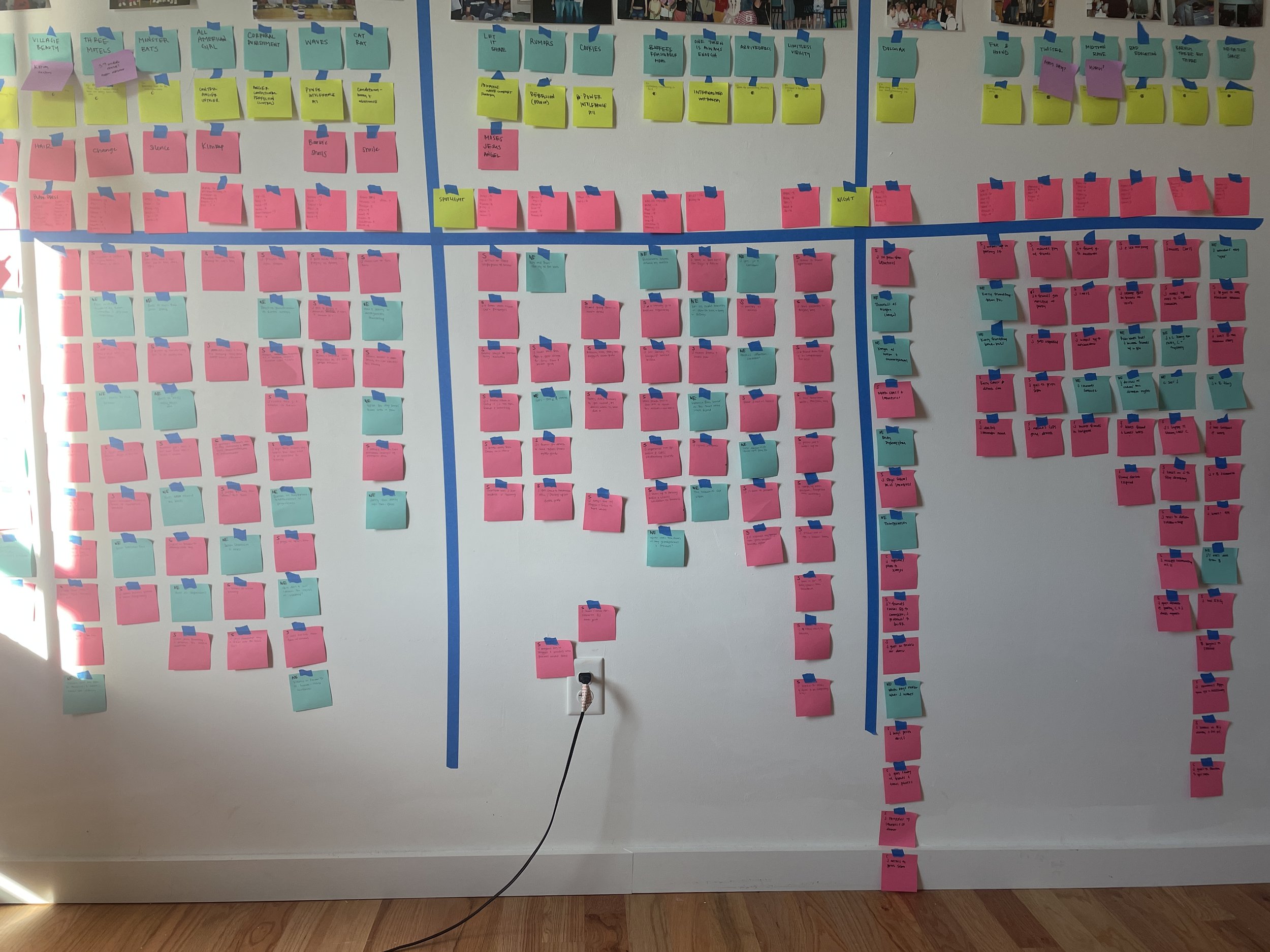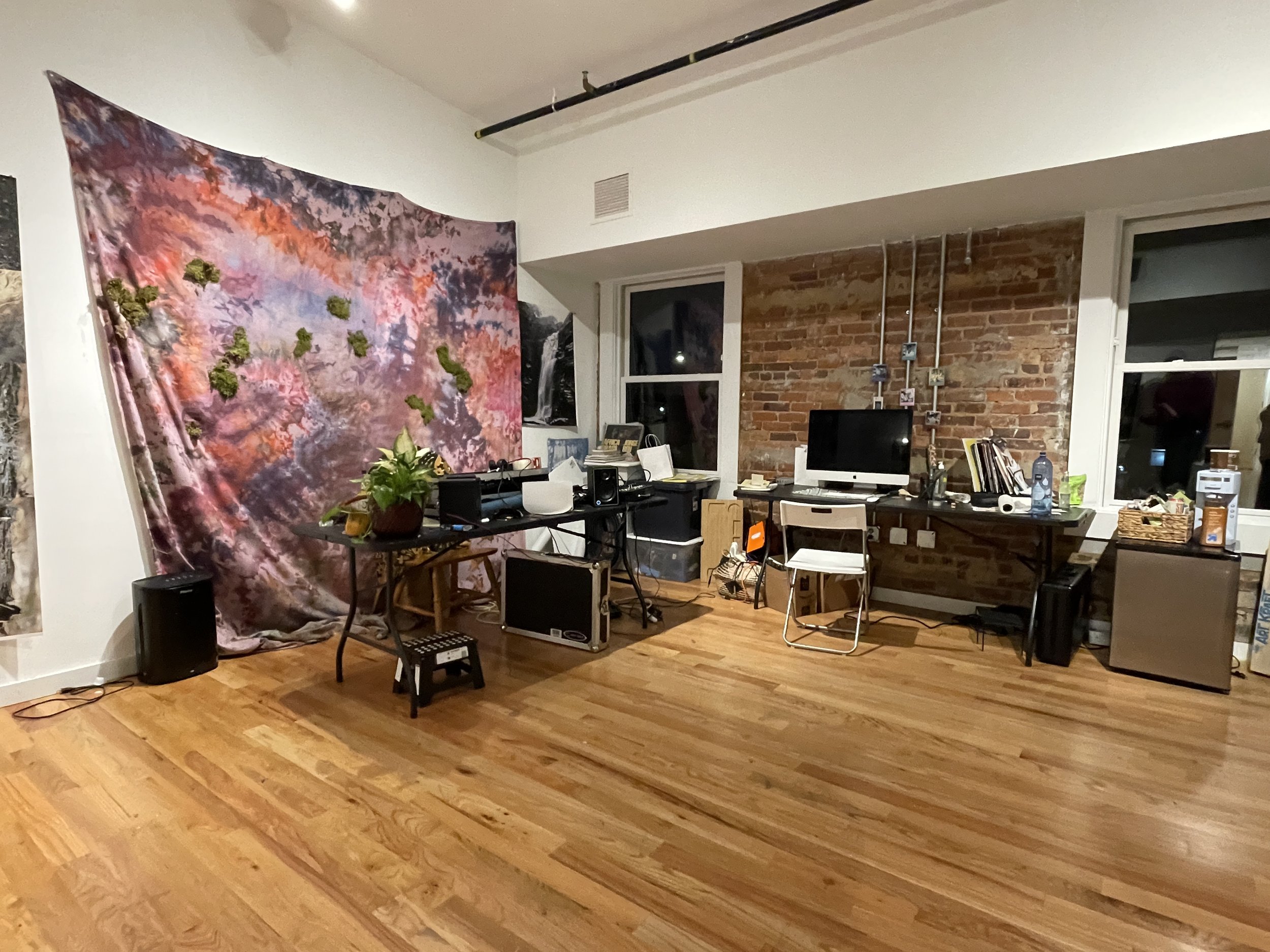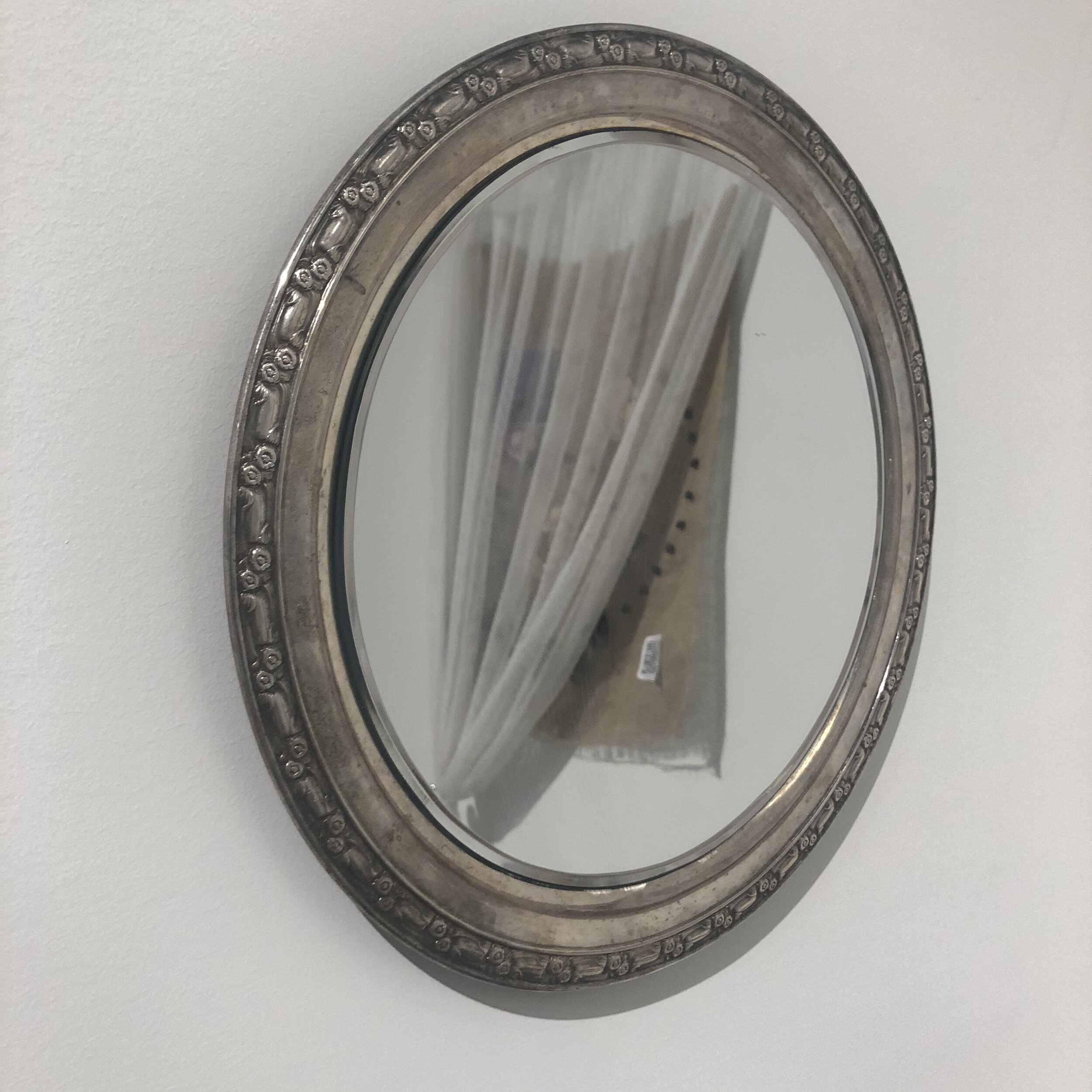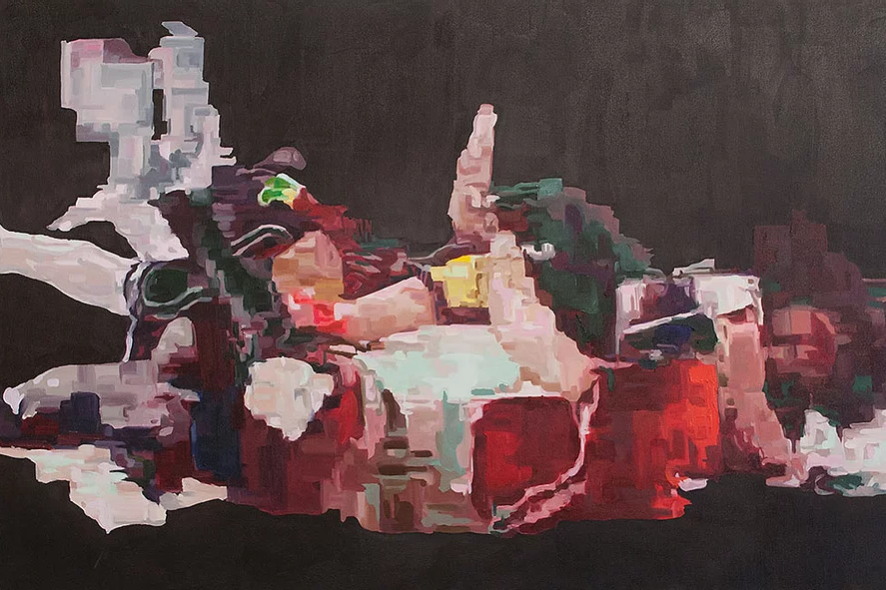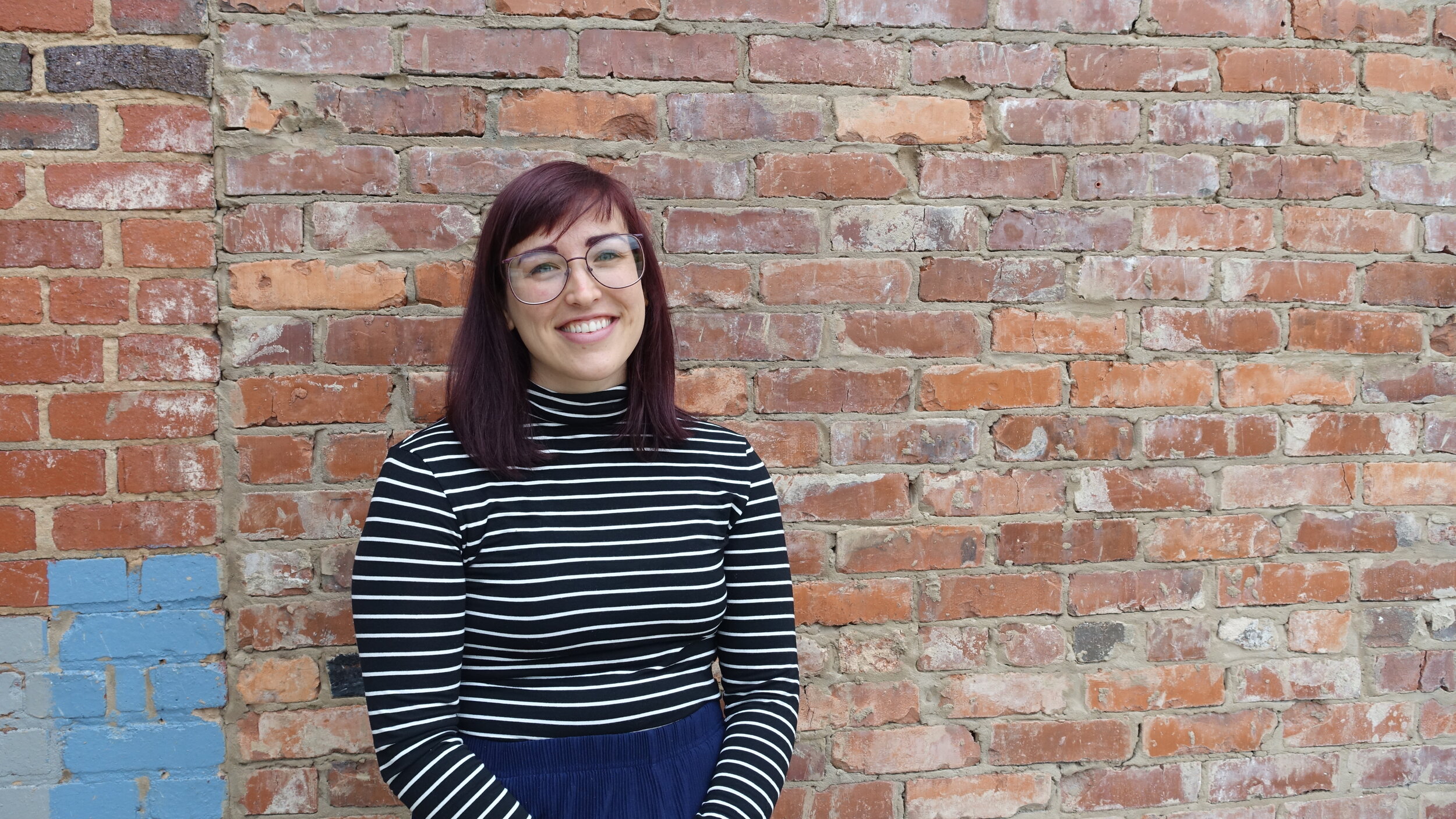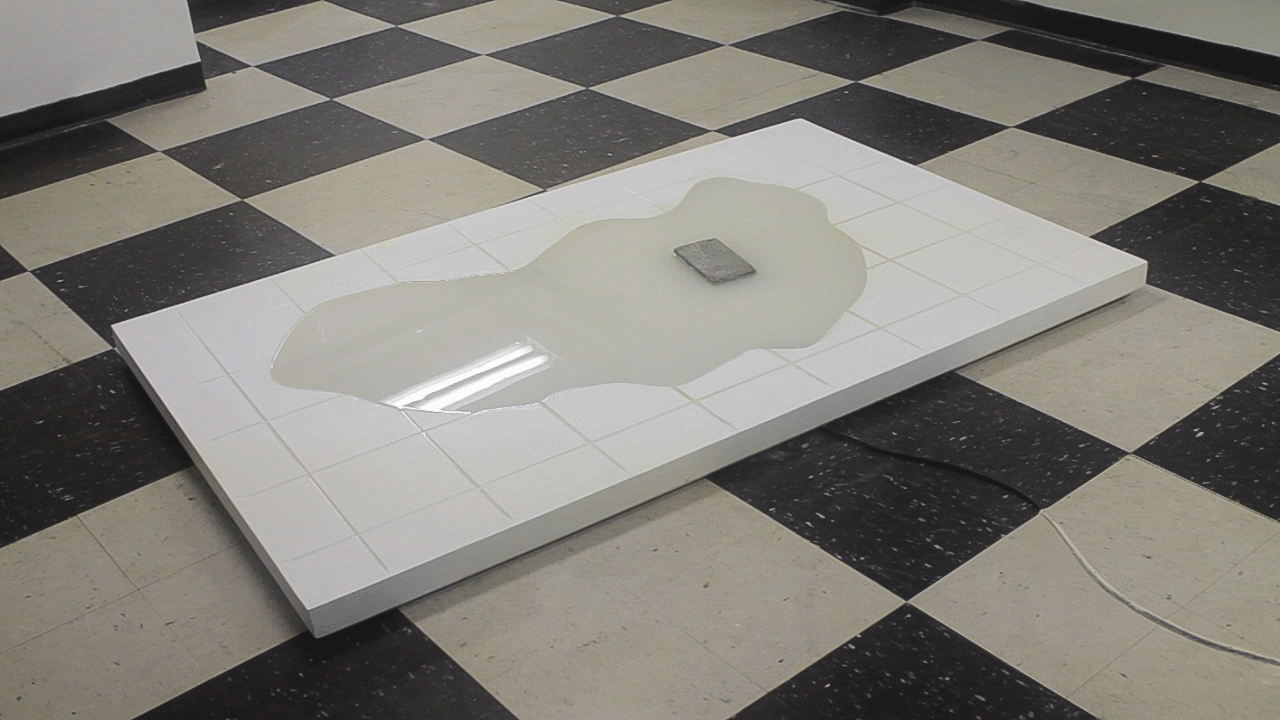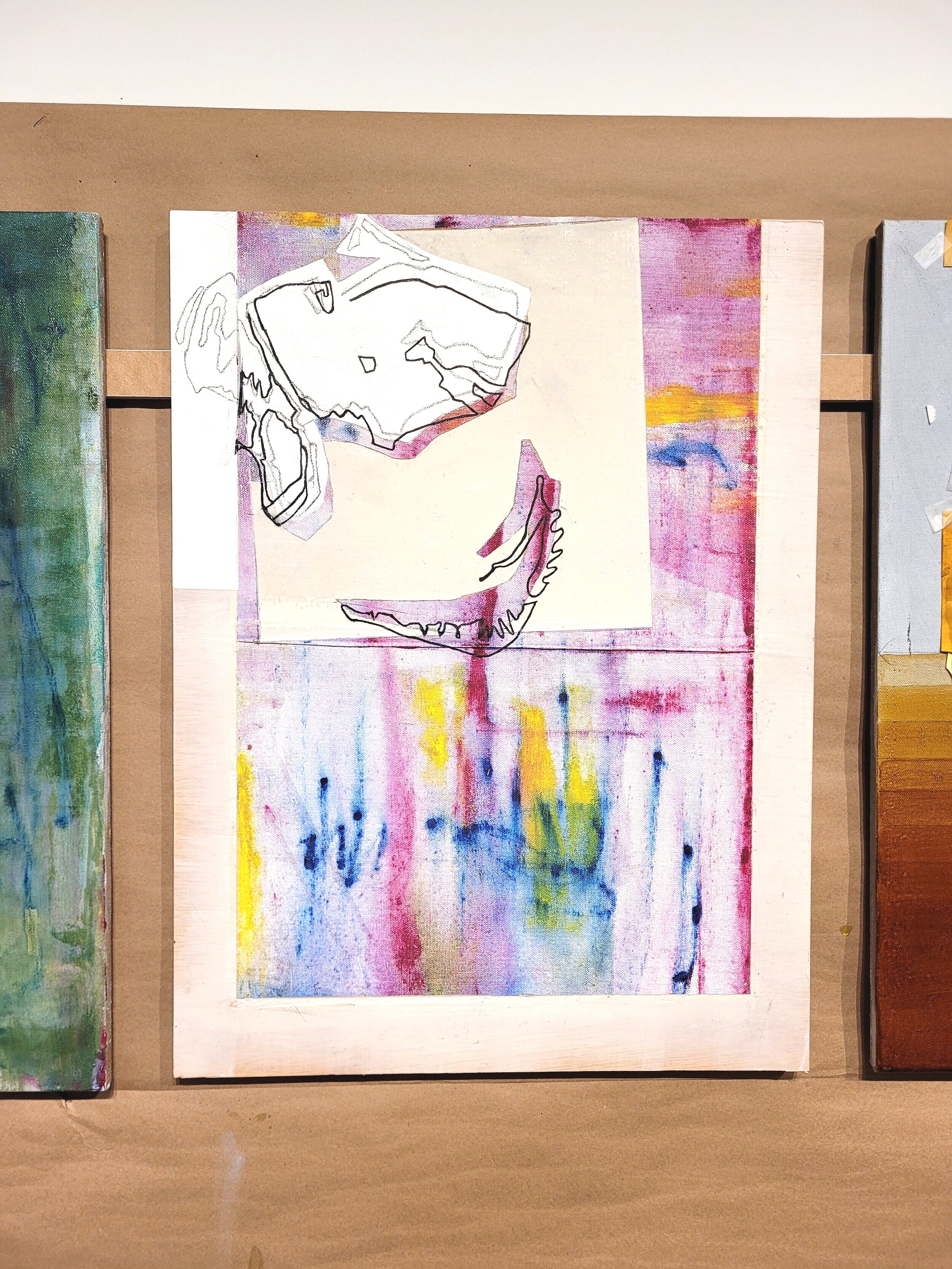Carrie Fonder is a sculptor, installation, and video artist whose work uses humor to play with issues of power. Fonder earned her MFA in sculpture at Cranbrook Academy of Art and her BFA in sculpture at Milwaukee Institute of Art and Design. She is a Fulbright Nehru Award recipient and is currently a member of Good Children Gallery in New Orleans, Louisiana. She has exhibited her work nationally and internationally from Detroit to New Delhi. Fonder is an Associate Professor of Art at the University of West Florida.
https://www.carriefonder.com/
Interviewed by Cass Dickenson
C: Why don't you tell us a little bit about yourself?
CF: My name is Carrie Fonder, and I'm an Associate Professor of Art at the University of West Florida. I’m a sculptor, video and installation person.
Jerry/Carrie is Up to the Task or How to Be an Art Critic, video still, video runtime: 4:44, 2020
C: So what kinds of ideas are you working with? What are you interested in?
CF: Largely, I'm interested in using humor as a strategy within art to investigate an array of topics, but art and power are things that I've come back to rather frequently. Formally, within my work, I've moved between two-dimensional and three-dimensional work, not just in terms of broad mediums like video and sculpture, but also within singular works, I'll experiment with the relationships between 2D and 3D. So, for example, I might make an object that then reappears within a video, or then parts of the video that reappear within a two dimensional word that I then collage onto, and so on, and so forth.
C: So what is humor for you? Why humor? What does it do for you?
CF: Well, let me back up. When I was in my early 20s, I was told to go check out a Tim Hawkinson show. And it was so quirky and hilarious, and diverse. And it kind of worked against the seriousness of art school, which I was in at the time. I went to a lovely school, but at the time, it was fairly traditional. He had such an interesting practice that moved in so many different directions and felt like the humor, the experimentation, and–dare I say–joy seemed apparent within it. And that really calls me and through my own work. I mean, it took me years to come to a point where I started to think about humor in the context of my own work. It definitely did not happen at that moment. But within my own work, I started to think about humor as a tool to examine things in a way with some levity where I feel like it can become a lens through which we view things that are actually pretty serious. So humor allows me to look at things through a different lens, which makes them easier to view through a shift in perspective.
C: So what are some funny things to you right now? Politics? A good joke you heard recently? Is anything funny right now?
CF: Funny to me right now? I think I'm kind of forced to admit that I love things that aren’t funny. It's not that I find something funny, and then from there choose to make work about those things. It’s more that I find something terribly unfunny and choose to make work about it. A recent example within my work would be the art critic Jerry Saltz who wrote a book called How to Be an Artist, which I think is really ironic since he always talks about how he's a failed artist. And of course, he's an art critic. So I think it's very funny that he is writing this book. And so for me, that’s an opening to poke a little fun at that idea someone who positions themselves as an authority.
Little Laborers, Installation view, Good Children Gallery, 2020.
C: I feel like it’s a calculated rhetorical device.
CF: Calculated and Jerry are good words to put in the same sentence. Yeah, there’s definitely a schtick that he's very aware of. He's aware of the cards that he's playing for sure.
C: So it’s not Jerry Saltz, then? You’re poking fun at this authority he embodies?
CF: In a way, but then ultimately what I do is I dress up in drag as him. And it's not good drag.
He likes to talk about how writing is like getting naked in front of someone for the first time. So within my Jerry drag, you can hear that I'm typing on a computer, but you can see me just from the shoulders up. I'm not clothed other than a baseball cap that says PACE. And then when it cuts to a different view, I've gotten a still of a man's chest, off of the internet. And then I put my hands in front of that still image pretending to type through a really bad green screen. And the proportions are all off. I allow those kinds of wonky things to come into play with the work to point to that I'm approaching it with some levity.
C: So essentially, you're treating Jerry as a costume. Has he ever seen it? Has he ever acknowledged you dressing up as him?
CF: Well, I don't know if he’s seen that particular piece, but I know that I was in a show recently with a pair of panties I’d embroidered his face onto, where someone at the exhibition took a photograph of those. She sent them to him and his response to her was something like “bam, that'll stop anyone!”. And he wanted to see more of the work. So she forwarded that to me, he wanted to see more of the work and left his email. So she forwarded that to me so that I can then forward some of my work, which was very nice to not just send him random phone pictures. I sent him the work, but he never acknowledged that he had received it. Now, if his inbox was full at that moment, he never got around to it, if he found it offensive or just not worth commenting on, I’ll never know!
C: What a missed opportunity.
CF: I know, right? I had other people suggest that I should send him the panties. But frankly, there's so many labor hours that went into those pants.
Work in progress while in residence at Stove Works
C: So what work are you making during your residency at Stove Works? I don't see any Jerry Saltz in here.
CF: Right now there's no figures. I mean, I have a collage with tube socks here, which is a figure reference. The piece that I'm working on now is a geodesic dome structure. I’m still figuring out where that’s headed. I'm playing around with an Elvis song, “Summer kisses, Winter Tears”, which to me feels like the end of the world. And there will be a variety of things happening within it that are hopefully humorous, and will do the same things that my previous work has done without the cast of characters being quite so specific.
But then in a bigger way, my time at Stove Works has allowed me I've definitely been pushing ahead on that on the geodesic dome piece or what may become the geodesic dome piece. But I've also been really just affording myself an opportunity to play a bit and to experiment with more collage type work and photographing sculptures and then recontextualizing them in collages and doing some work with some flash and just playing with some different things that if I were at home, I would feel like I needed to, you know, do work in a, in a more linear way and focus on the next project and the next show where I'm allowed, like this month to kind of allow, I've allowed this month to be a time in which I can focus on the next show, but also a time in which I can play and experiment and that sort of thing.
C: You said you’re thinking about the end of the world. What’s causing the end of the world? Are you thinking about it as a narrative background for you or something really happening? Or is it the idea of The End of the World that you're just joking about?
CF: So, it's not actually the end of the world. I’m still making the work, so anything could happen at this point. But I'm really thinking about that song as a point of departure, because it's a song about love gone south. For me, I see a lot of people nostalgic about the status quo, at this point when things feel like they’re going south. So what potential is there for change beyond that? So the exhibition that the show will be in will have multiple rooms. So my hope is that within the first room would have the dome or whatever form that structure ends up taking, and then you will move beyond it. And in the back room. One of my influences is I have this bin, I started a worm bin during the pandemic, and then we feed them our compost.
C: Sounds like a weird sourdough project.
CF: Yeah, I dodged the sourdough for the worms. Maybe this is humorous or ridiculous, but I'm thinking about my worms and the cycle of decomposition and material cycles. I feel like some of that happens within my work, where one thing becomes another thing becomes another thing and… And the output becomes unintelligible as it goes through the cycle. So my worms are probably going to be making some cameo appearances, not physically, but in terms of video in the secondary room of the exhibition. So thinking through change. So rather than the end of the world being final, there's just an ending that then allows for change.
C: Is there anything we can look forward to in the coming months?
CF: Yeah, I have a show coming up in July at Good Children Gallery in New Orleans, so that’s where this work will find its momentum!
C: Great to hear. Thanks Carrie!




















